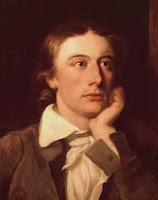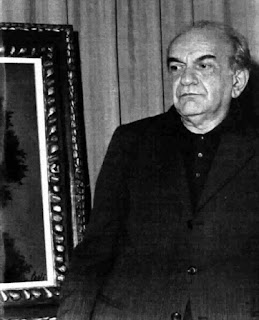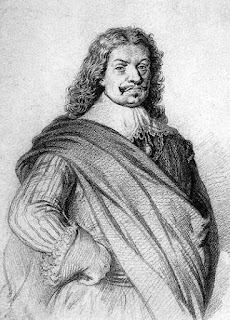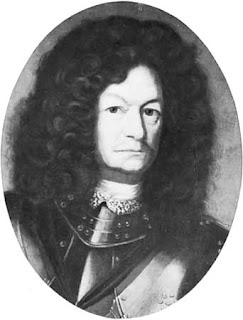Enrico Caruso – opera singer
Tenor's voice still regarded as greatest of all time
Operatic tenor Enrico Caruso was born on this day in 1873 in Naples. Believed by many opera experts to be the greatest tenor of all time, Caruso had a brilliant 25-year singing career, appearing at many of the major opera houses in Europe and America. He made more than 200 recordings of his beautiful voice, some made as early as 1902. Caruso was born in Via San Giovanello agli Ottocalli in Naples and baptised the next day in the nearby church of San Giovanni e Paolo. At the age of 11 he was apprenticed to a mechanical engineer and also worked alongside his father in a factory. At the same time he was singing in his church choir and was told his voice showed enough promise for him to consider becoming a professional singer. Until she died in 1888, he was encouraged by his mother. To earn money, he started to work as a street singer in Naples, progressing to singing Neapolitan songs as entertainment in cafes. Having decided to become an opera singer, Caruso took singing lessons, keeping up with them even during his compulsory military service. He made his stage debut in 1895 at the Teatro Nuovo in Naples. Read more...
_________________________________________________________________
Alberto Sordi - actor
Comic genius who appeared in 190 films
Alberto Sordi, remembered by lovers of Italian cinema as one of its most outstanding comedy actors, died on this day in 2003 in Rome, the city of his birth. He was 82 and had suffered a heart attack. Italy reacted with an outpouring of grief and the decision was taken for his body to lie in state at Rome's town hall, the Campidoglio. Streams of his fans took the opportunity to file past his coffin and when his funeral took place at the Basilica of San Giovanni in Laterano it was estimated that the crowds outside the church and in nearby streets numbered one million people. Only the funeral of Pope John Paul II, who died two years later, is thought to have attracted a bigger crowd. Sordi was the Italian voice of Oliver Hardy in the early days of his career, when he worked on the dubbing of the Laurel and Hardy movies. He made the first of his 190 films in 1937 but it was not until the 1950s that he found international fame. He appeared in two movies directed by Federico Fellini - The White Sheik and I vitelloni. In the latter, he played an oafish layabout, something of a simpleton but an effeminate and vulnerable character to whom audiences responded with warmth and affection due to Sordi's interpretation. Read more…
__________________________________________________________________
Carlo Goldoni – playwright
Greatest Venetian dramatist whose work still entertains audiences today
Carlo Goldoni, the author of The Servant of Two Masters, one of Italy’s most famous and best-loved plays, was born on this day in 1707 in Venice. Goldoni became a prolific dramatist who reinvigorated the commedia dell’arte dramatic form by replacing its masked, stock figures with more realistic characters. He produced tightly constructed plots with a new spirit of spontaneity and is considered the founder of Italian realistic comedy. The son of a physician, Goldoni read comedies from his father’s library when he was young and ran away from his school at Rimini with a company of strolling players when he was just 14. Later, while studying at the papal college in Pavia, Goldoni read comedies by Plautus, Terence and Aristophanes and learnt French so he could read plays by Molière. He was eventually expelled for writing a satire about the ladies of Pavia and was sent to study law. Although he practiced law in Venice and Pisa and held diplomatic appointments, his real passion was writing plays for the theatres in Venice. In 1748 he began writing for the Teatro Sant’Angelo company and dispensed with masked characters altogether for his play, La Pamela, a serious drama based on Samuel Richardson’s novel. Read more…
________________________________________________________________
Giovanni Battista Morgagni - anatomist
The father of modern pathological anatomy
Anatomist Giovanni Battista Morgagni, who is credited with turning pathology into a science, was born on this day in 1682 in Forlì in Emilia-Romagna. Morgagni was professor of Anatomy at the University of Padua for 56 years and taught thousands of medical students during his time there. He was sent by his parents to study philosophy and medicine at the University of Bologna when he was 18 and he graduated as a doctor from both faculties. In 1706 he published his work, Adversaria Anatomica, which was to be the first volume of a series and helped him become known throughout Europe as an accurate anatomist. He succeeded to the chair of theoretical medicine at the University of Padua in 1712 and was to teach medicine there until his death in 1771. Morgagni was promoted to the chair of anatomy after his first three years in Padua, following in the footsteps of many illustrious scholars. He brought out five more volumes of his Adversaria Anatomica during his early years in Padua. In 1761, when he was nearly 80, he brought out the work that was to make pathological anatomy into a science – De Sedibus et causis morborum per anotomem indagatis (Of the seats and cause of diseases investigated through anatomy). Read more…
Home




























